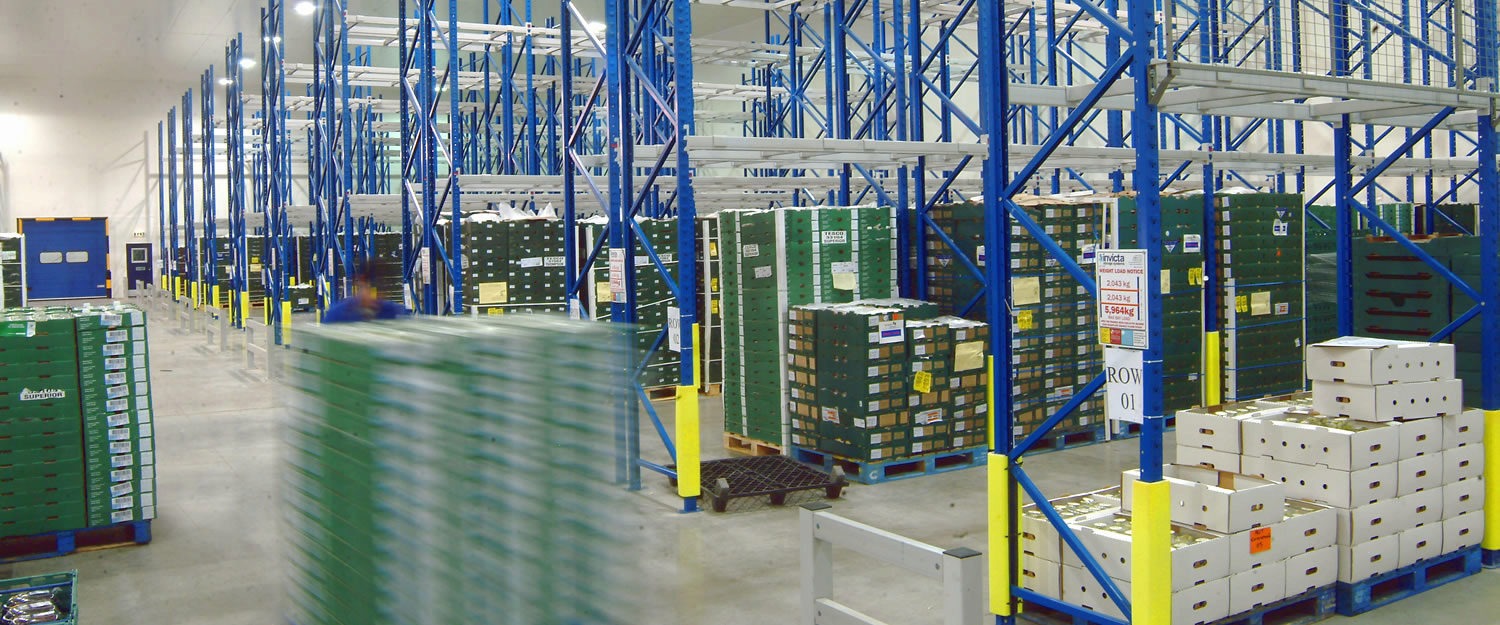For your information
You are being redirected to one of our divisional subsites which contains more detailed information on the required division. To navigate back to the main Invicta Group site, please click the link found in the footer at the bottom of the page.
How to make the most of your existing warehouse space
12th July 2022
Mixing the old and new
Quick Quote
Contact Mick Coyne
To get a quotation or arrange a free site survey - Call Mick Coyne on
-
 UK
UK
Current location:
Quick Quote
Contact Mick Coyne
-
 UK
UK
Current location:
The cumulative effects of Brexit and the pandemic have been a boom for ecommerce businesses, who can scarcely ship orders fast enough to meet demand. The surge in online shopping has elevated demand for warehouse space, while the ongoing delays to shipping have made it necessary to stockpile goods.
While warehouses are being built around the country, it’s proving impossible to keep pace with the needs of businesses. As a result, many are having to think about how to maximise their existing warehouse spaces in order to avoid moving. Here are just a few ideas to help you make the most of your warehouse space, and avoid the spike in warehouse prices.
Racking upgrade
The first port of call when considering potential efficiency savings in your warehouse is the way you store goods. Racking likely takes up the majority of your warehouse space, so logically, it’s also where the biggest efficiency savings can often be found. The more densely packed your racking is, the more you can fit into the same area – and the better organised it is, the faster you can store and retrieve pallets.
Before you choose a type of racking, your racking provider will likely conduct a site visit to attain a precise picture of your warehouse space. An efficient racking design will take the shape and contours of your warehouse into account, and design a system that uses the space to its full potential. This might involve some rows being shorter or longer than others, or building the racking around support pillars.
The next step will be to decide on the type of high density pallet racking that suits you. There are a range of formats which could offer more storage space – or more space for other applications – but the one you choose will depend on what you need it for, and the equipment you have. Narrow aisle racking for instance is very dense, but can require specialist ride-on or pedestrian operated forklifts, while a multi-tier system will require further structural changes.
Mezzanine floor
While your racking may already be optimised, it’s common to have a lot of empty space above it. Many warehouses include a significant amount of wasted headroom, useful for little else than increasing your air conditioning bills. By building one or more mezzanine floor levels within your space, you can fill this wasted space, and create new capacity out of thin air.
Mezzanine floors are designed to support extremely high load requirements, allowing you to use them for all sorts of activities. It’s common to have a multi-tier racking system with different floors for vehicles and pedestrians to store and pick goods. These can then be linked with walkways, lifts, staircases and even chutes to minimise the delays between your storage and logistics.
However, mezzanine floors can also be designed to create additional space in support of your storage area. From observation areas to offices to IT hubs and robot storage, mezzanine floors offer a flexible and cost-effective means of growing your business without changing location. They can even host production lines and heavy plant and machinery, allowing you to bring your manufacturing and storage areas together.
Advanced WMS
If the weight of orders is a bigger problem than the space to store them in, you may want to look at your logistics. The interconnectivity between your warehouse, packing and fulfilment areas and deliveries is crucial to reducing inefficiencies. Every order and item needs to be tracked throughout the logistics process, from storage to packing to shipping.
Where traditional systems sometimes allow for inventory mistakes or missed orders, an advanced warehouse management system (WMS) introduces contingencies. A WMS can use various tools to ensure accurate inventory management and order fulfilment, keeping track of stock and orders throughout the process. Tools such as hand scanners and sensors can expedite the stock management process, updating the system with the latest information with no need for manual input.
A properly managed and integrated WMS can automate much of the stocktaking and ordering process, and flag up errors or shortfalls before they snowball. Deploying an advanced WMS also puts you in a position to benefit from robots and autonomous vehicles, should you decide to deploy them in the future. These can usually be integrated directly with the WMS, allowing them to be controlled and monitored in parallel with other resources.
Robots & cobots
From science fiction to science fact, robots have made a staggering impact on the storage and distribution industries. While heavy investors such as Amazon are pulling ahead, robots and autonomous vehicles are becoming a viable option for all sizes of business thanks to the ‘robots-as-a-service’ (RaaS) industry. Robots can now be leased from dedicated providers, who offer software and hardware updates without the heavy capital investment or specialist staff this would normally demand.
Robots can take a number of forms. The traditional static robot seen on production lines has begun to be adapted for picking, with sensors helping to avoid collisions from swinging arms, and special claws to grip items with an appropriate amount of pressure. For areas with little to no pedestrian traffic, or with clearly delineated areas, autonomous vehicles can also move and store pallets. A WMS will issue a command wirelessly, and the vehicle can find its way to and from the rack either using advanced sensors, or by travelling on a rail or other set path.
Robots intended for use in close proximity to people are being described as ‘cobots’, or collaborative robots. Examples of this include logistics robots that can carry single pallets or other items, and use advanced sensor technology similar to driverless cars to prevent collisions. Cobots are often used to hasten the passage of items through the fulfilment process, and are ideal for strenuous or repetitive manual labour, such as picking and sorting goods.
—
With internet shopping only set to increase the demand for warehouse space, businesses will need to find new ways to improve the efficiency and capacity of their existing storage areas. The good news is that a range of options exist to achieve this – whether you’re ready to jump into new technologies or prefer to rely on more traditional methods.
Accreditations & Affiliations







Start your project
Tell us about your project. Please complete this form. One of our sales team will come back to you with more details. If you prefer, you can drop us an email.




Share/Like this page